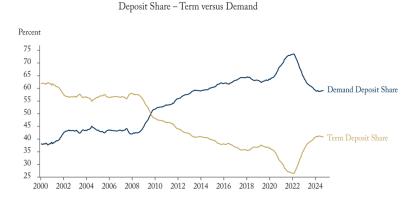In this edition of Graphic Intelligence, we show trends in Canada’s unemployment, employment and labour force participation rates of the population aged 15 and over during the past decade.
Indicators such as unemployment and employment rates are, of course, useful metrics for assessing the performance of the job market. Historically, these metrics moved in opposite directions, all else being equal. Since the 2008-09 recession, the unemployment rate has fallen to pre-recession levels. Unprecedentedly, the employment rate has also trended downward at the same time, raising questions about the health of the labour market. So what explains this decline?
The explanation lies in the shrinking rate of participation in the labour force. The joint decline in employment and labour-force participation rates are consistent with an aging labour force, since labour-force participation declines with age.
The phenomenon of simultaneously declining unemployment and employment rates in Canada does not, in itself, indicate a weak labour market, as it seems to result from voluntary exits from the labour force due to retirement. Nor does it indicate a healthy labour market. We need better policies to encourage labour participation for seniors, and also immigrants. The labour market participation rate of prime-age new immigrants (25-54) was 11.2 percentage points below that of non-immigrants in 2017. This implies the need for better settlement supports to address their barriers to market entry such as lack of credential recognition and inadequate language proficiency.
To learn more about the impact of retirement timing on the Canadian labour market, read “Retirement timing a key factor in employment rate” by Parisa Mahboubi. Also, to learn more about how low immigrants participation impacts Canada’s labour force, read “Translating population growth into the labour force” by Parisa Mahboubi and Daniel Schwanen.





